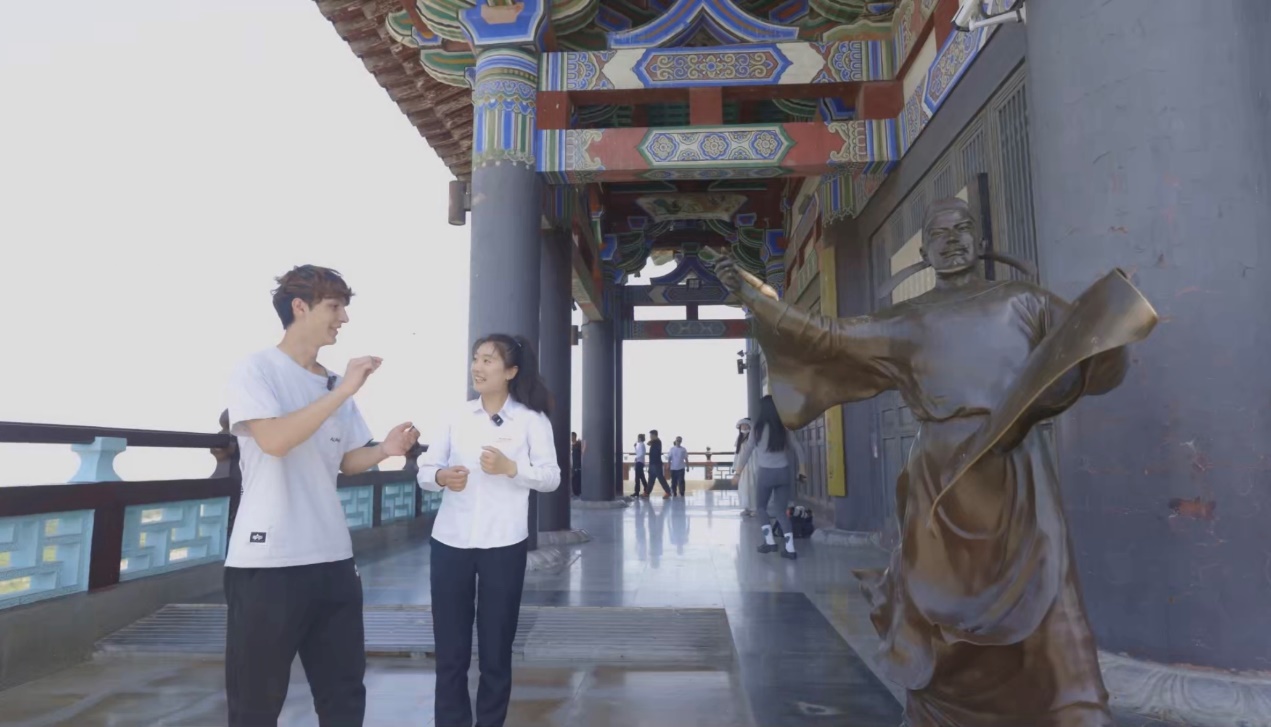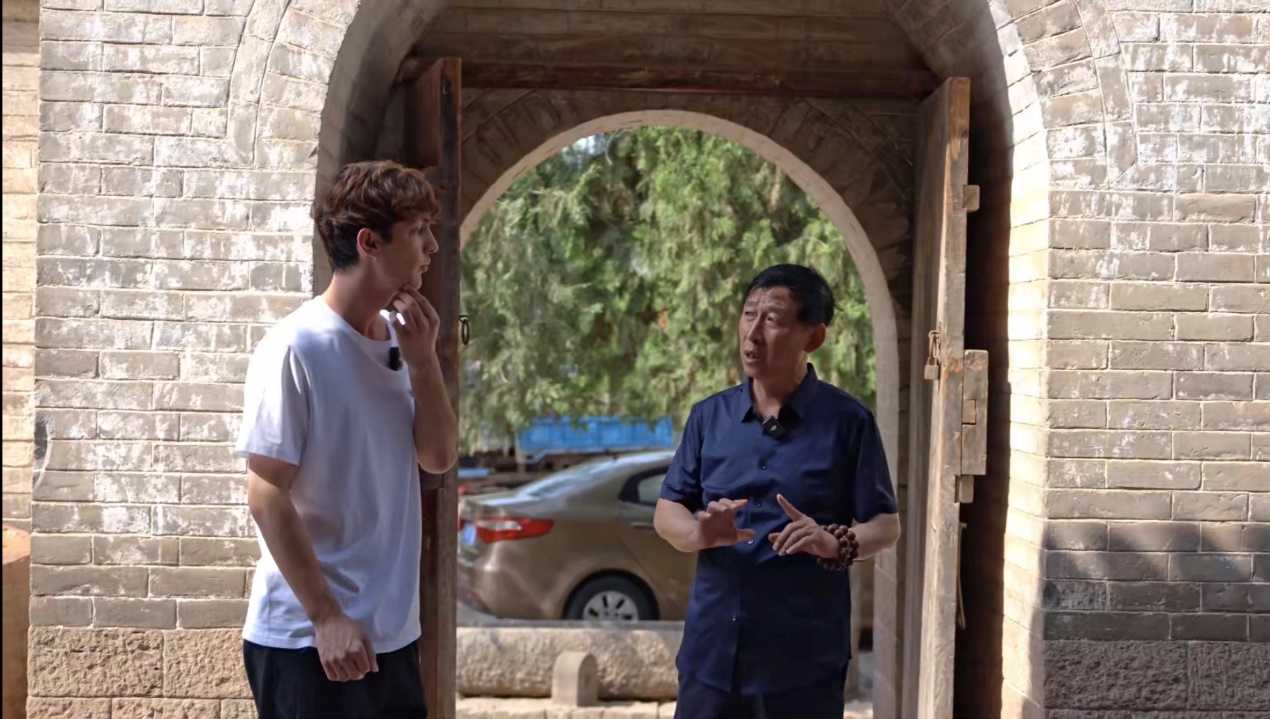 2024-08-24
2024-08-24

The Yellow River, the cradle of civilization, is known as the mother river of China. For thousands of years, the Yellow River has surged forward along its winding course. Within Shanxi, it rushes through the land, leaving behind breathtaking landscapes and a rich and enduring cultural history.
“My Chinese friends tell me that one of the most magical experiences during their travels is standing amidst stunning scenery and suddenly realizing it was once a ‘test point’ in their school lessons, exclaiming, ‘I learned about this in my textbooks!’ In that moment, the content from the books becomes tangible.” Abdurahmonov Jamshed, a student from Tajikistan studying at Shandong University, is deeply curious about the “test points” in Chinese textbooks.

Guided by the team, Abdurahmonov Jamshed embarked on a journey along the Shanxi section of the Yellow River, from north to south, to explore the “Yellow River stories” told by poets.
“Don’t you espy the Yellow River surge down from the sky; Up to the sea it does tumble and flow...” Hukou Waterfall, a wonder of the Yellow River. According to historical records, Hukou Waterfall has been celebrated by poets and scholars since ancient times, earning the title of the “first wonder of the Yellow River.” Throughout the ages, numerous poems and essays have praised its majestic scenery, contributing to its rich cultural heritage.

Yang Jiqing, the guide at Shanxi Hukou Waterfall Scenic Area, explained that as the second-largest waterfall in China, Hukou Waterfall is renowned as the “Yellow River wonder” and is one of the widest yellow waterfalls in the world. The torrent of water cascades down with unstoppable force, like thousands of horses galloping, stirring up waves like snowdrifts and producing a thunderous roar, reminiscent of ancient war drums.

Continuing southward, if the grandeur of “The sun sets behind the mountains, the Yellow River flows into the sea” is difficult to grasp, a visit to the real Guanque Tower might be in order.

Guanque Tower, one of China’s four great towers, is a landmark building along the Yellow River. Zhao Wenjia, a guide at the Guanque Tower Scenic Area in Yongji City, explained that the tower was first built during the Northern Zhou Dynasty and was celebrated as a prime location for high-altitude views during the Tang and Song dynasties. Scholars and poets ascended the tower to enjoy the scenery, looking out at the beauty of Zhongtiao Mountain and the rushing river below, leaving behind timeless poetry.
To Jamshed, this storied and legendary building is more than just a subject of poetic admiration—it is a frozen piece of history, a heavy tome of cultural heritage, revealing the wisdom and talent of the ancients.

“Have you not seen, the waters of the Lüliang are a world wonder, roaring and rushing without pause.”
The final stop on this journey to explore the poets’ stories of the Yellow River in Shanxi might be less familiar: Qikou Town. Yet, it is known as the “first town on the winding Yellow River,” where generations of people have lived in close connection with the Yellow River, a bond that has endured to this day.

Qikou Town is one of the birthplaces of Shanxi merchants. At its peak, Qikou Wharf saw 150 boats daily and housed over 300 various service shops. Over time, Qikou earned the reputation of being a “small metropolis of both water and land trade,” renowned across the country.

Zhang Zhenhua, a guide at the Qikou Ancient Town, grew up there and knows the history of every corner by heart. Through her introduction, it is learned that the town has a rich collection of well-preserved Ming and Qing dynasty buildings, including warehouses, banking houses, pawnshops, temples, residences, and docks. Because the town still maintains its original and rustic way of life, it is also known as a “living ancient town.”

Today, the deep historical and cultural heritage, the ever-surging Yellow River, the rolling Loess Plateau, and the picturesque natural scenery and unique human landscape of Lüliang Mountain come together in harmony at Qikou, forming the Qikou Tourism Area centered around the ancient town. Qikou is now embracing new opportunities for development.

The Yellow River culture links together the “jewels” of the Shanxi land, painting a picture of civilization with its flowing waters, and inspiring the creation of the most beautiful poems by poets and scholars alike.
More details: https://www.youtube.com/watch?v=jU95T0X_Wxg